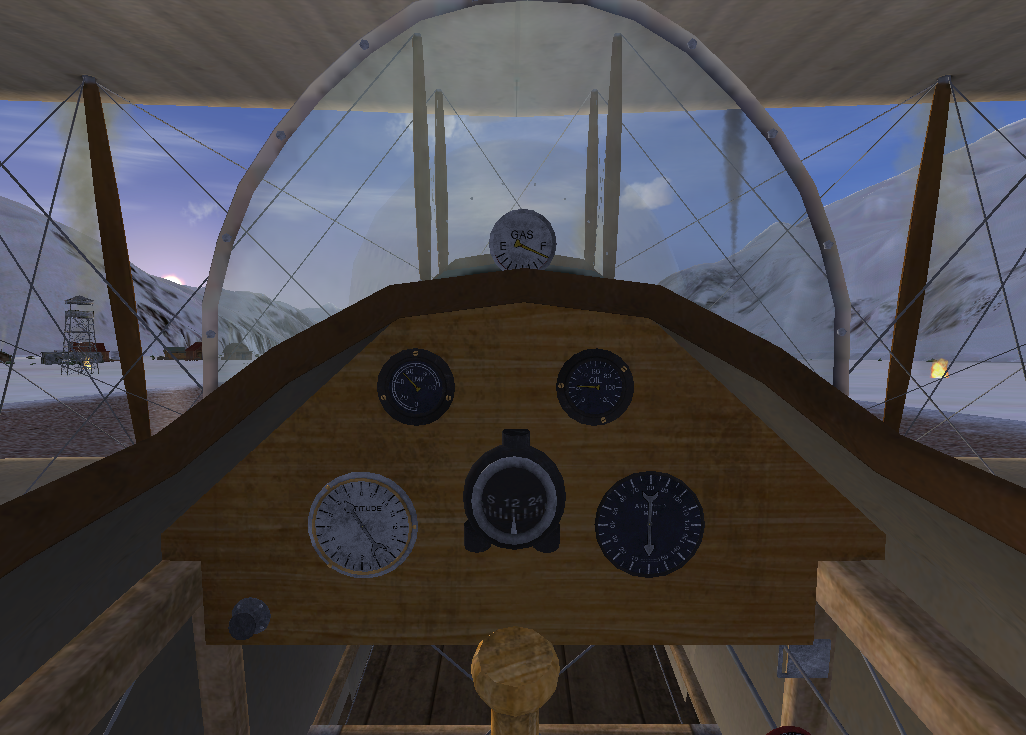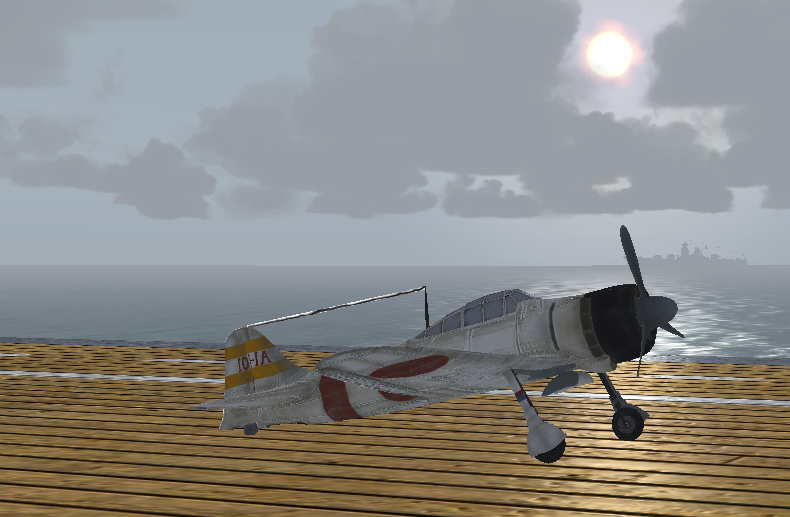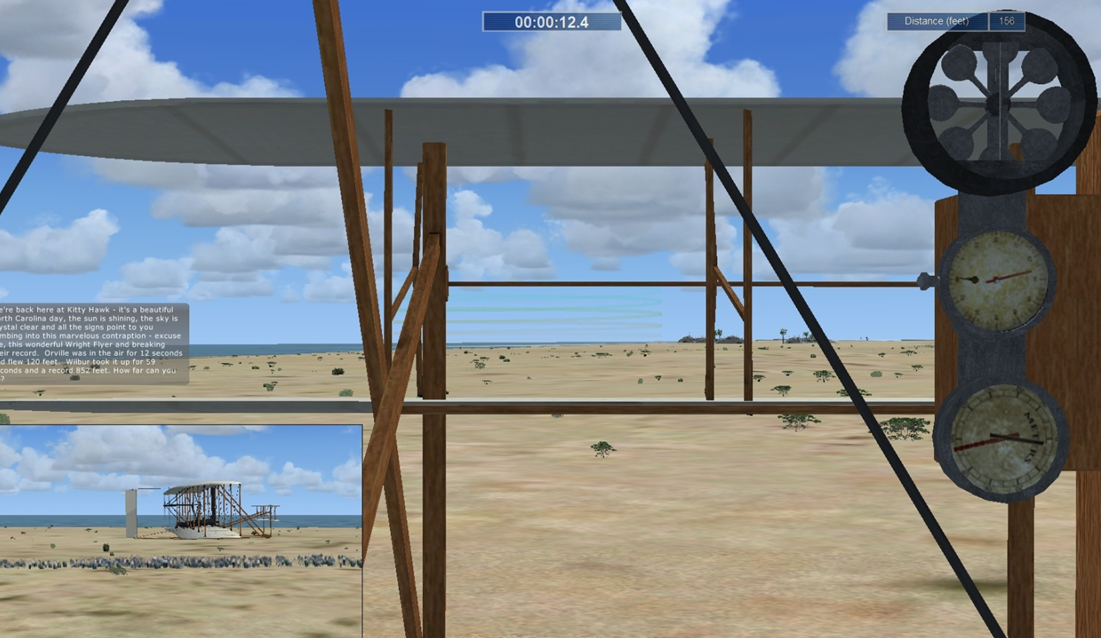


ACE - History of Flight series
What I've worked on:
What I've worked on:
•Eight singleplayer missions
•Two multiplayer missions
•Several aircraft
•Management of art and development teams
•Two multiplayer missions
•Several aircraft
•Management of art and development teams
The
History of Flight project was my first real foray into developing in
the ESP environment. I'd done some pilot work (pardon the pun) in FSX
for the AIR program already, but it was prototypical in nature, and I
didn't really start to grasp the full scope of the tools until I
started work on this project.
This was an interesting project, because not only was it a foundational learning experience with regards to the engine and its tools, it was a learning experience with regard to managing (and translating) the expectations of the company directing the development of the missions (the company I would later work for). What made the latter part there particularly challenging was the fact that this project represented the confluence of a team that hadn't worked with these tools before and a new relationship (the one between my future employer and my graduate-student directed team).
The result of this challenge was a series of missions that, while reasonably polished, were often tonally different from mission to mission. The constant struggle was to successfully integrate significant (7th-8th grade) learning objectives into missions in a simulator while keeping them as "game-like" as possible. There were a lot of ideas that were used and then abandoned in later missions.

There were a couple of places where we really nailed it, though. For one, the art was pretty good, and choosing to set the missions at a time with a rich visual history was a great one. Even when the missions felt a little silly (or just off-the-mark), seeing them felt like a trip through an aviation museum.
We also tried some generally crazy things, too. We didn't know a lot about the engine (yet), and consequently our efforts weren't always efficient - there was a lot of trying to fit square pegs in round holes. However, sometimes we succeeded at that, and it was really fun to see. One great concept we put together was forcefeeding a traditional multiplayer structure - team vs. team - into a program designed around an entirely cooperative (and noncombative) multiplayer experience. To work around the issue of weapons being unworkable (and undesirable, in this particular educational paradigm), we came up with what was essentially the game Battleship - a multiplayer game based on opposing teams carrying out simultaneous surface search exercises.

We had a couple missions that were really on target, too - they represented the point where the company we were working with looked at them and said "Yes. That. That is what we're describing." To this day, one of those missions continues to be probably my favorite I've developed in ESP. It really represented the synthesis of all three of these "nailed it" points.
The airplane model we used for that mission was a really nice one with a great cockpit model, and the mission itself had some great environment asset work. It shoehorned some functionality into the mission that the engine tried its best to disallow - a mechanic that made sure that resources were replenished only to their theoretical maximum (instead of being refilled by a flat amount). Even as I think about it now, I'm both proud that we got it working and a little frustrated that it wasn't supported in the first place. It was also the first mission where the company in question was really excited about the core concept and had no major requested changes.
So while this project probably represented most of the pitfalls of any first stab at an endeavor, it also bore all the hallmarks of an earnest, conscientious effort - a set of skills that provides a foundation for the work I do in this engine now.
This was an interesting project, because not only was it a foundational learning experience with regards to the engine and its tools, it was a learning experience with regard to managing (and translating) the expectations of the company directing the development of the missions (the company I would later work for). What made the latter part there particularly challenging was the fact that this project represented the confluence of a team that hadn't worked with these tools before and a new relationship (the one between my future employer and my graduate-student directed team).
The result of this challenge was a series of missions that, while reasonably polished, were often tonally different from mission to mission. The constant struggle was to successfully integrate significant (7th-8th grade) learning objectives into missions in a simulator while keeping them as "game-like" as possible. There were a lot of ideas that were used and then abandoned in later missions.

There were a couple of places where we really nailed it, though. For one, the art was pretty good, and choosing to set the missions at a time with a rich visual history was a great one. Even when the missions felt a little silly (or just off-the-mark), seeing them felt like a trip through an aviation museum.
We also tried some generally crazy things, too. We didn't know a lot about the engine (yet), and consequently our efforts weren't always efficient - there was a lot of trying to fit square pegs in round holes. However, sometimes we succeeded at that, and it was really fun to see. One great concept we put together was forcefeeding a traditional multiplayer structure - team vs. team - into a program designed around an entirely cooperative (and noncombative) multiplayer experience. To work around the issue of weapons being unworkable (and undesirable, in this particular educational paradigm), we came up with what was essentially the game Battleship - a multiplayer game based on opposing teams carrying out simultaneous surface search exercises.

We had a couple missions that were really on target, too - they represented the point where the company we were working with looked at them and said "Yes. That. That is what we're describing." To this day, one of those missions continues to be probably my favorite I've developed in ESP. It really represented the synthesis of all three of these "nailed it" points.
The airplane model we used for that mission was a really nice one with a great cockpit model, and the mission itself had some great environment asset work. It shoehorned some functionality into the mission that the engine tried its best to disallow - a mechanic that made sure that resources were replenished only to their theoretical maximum (instead of being refilled by a flat amount). Even as I think about it now, I'm both proud that we got it working and a little frustrated that it wasn't supported in the first place. It was also the first mission where the company in question was really excited about the core concept and had no major requested changes.
So while this project probably represented most of the pitfalls of any first stab at an endeavor, it also bore all the hallmarks of an earnest, conscientious effort - a set of skills that provides a foundation for the work I do in this engine now.